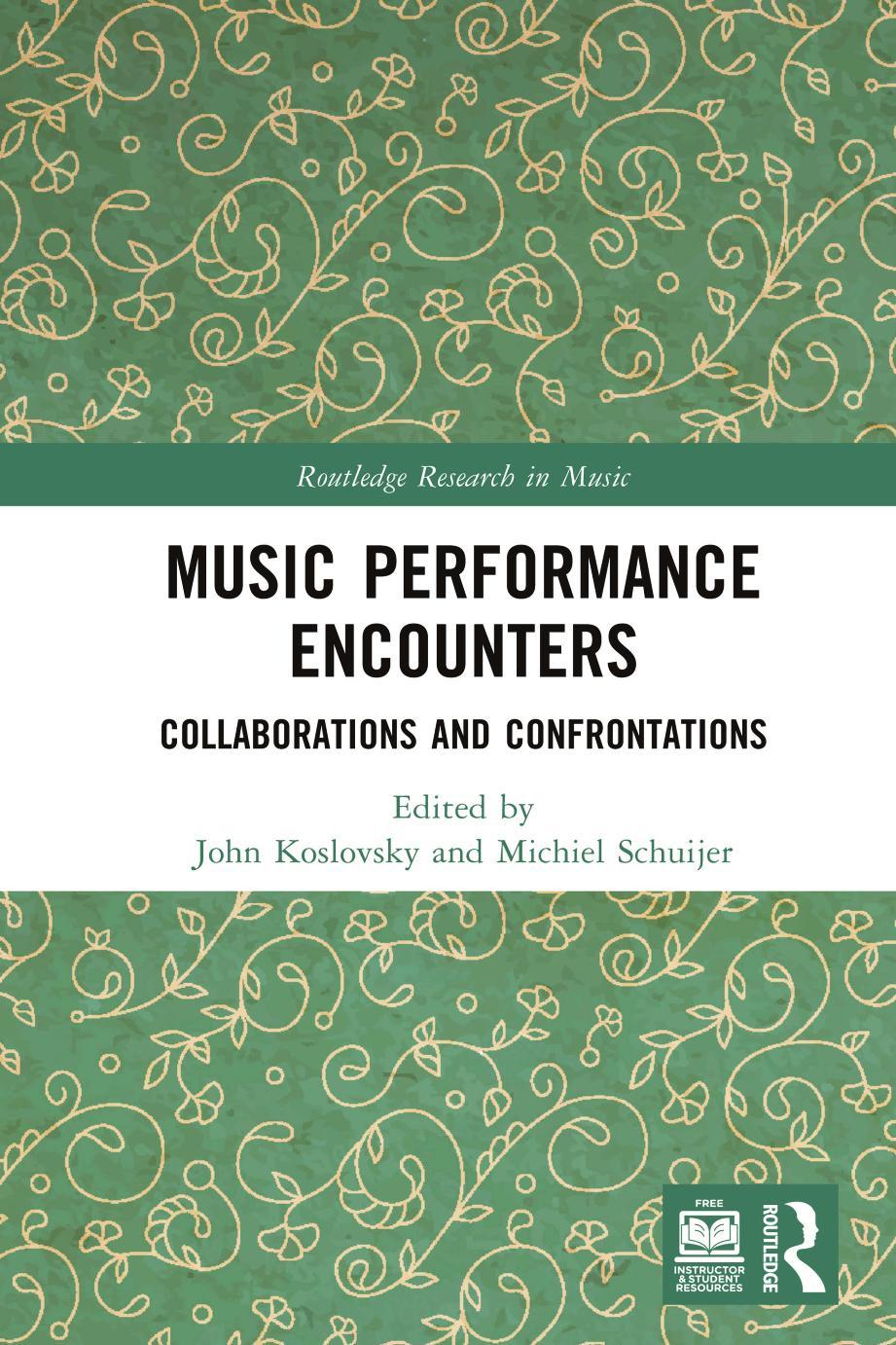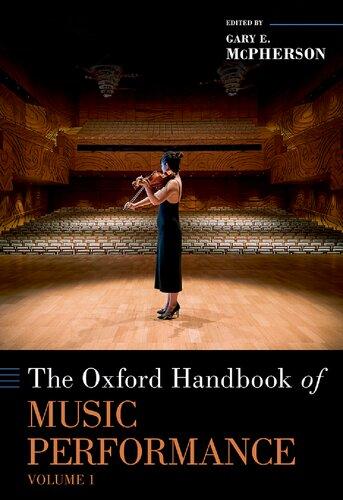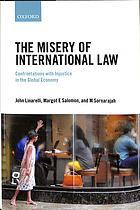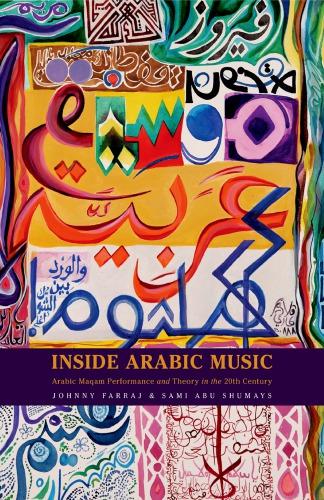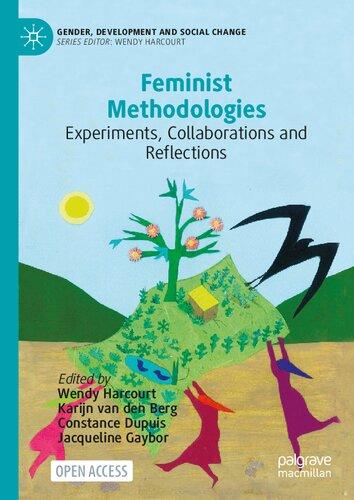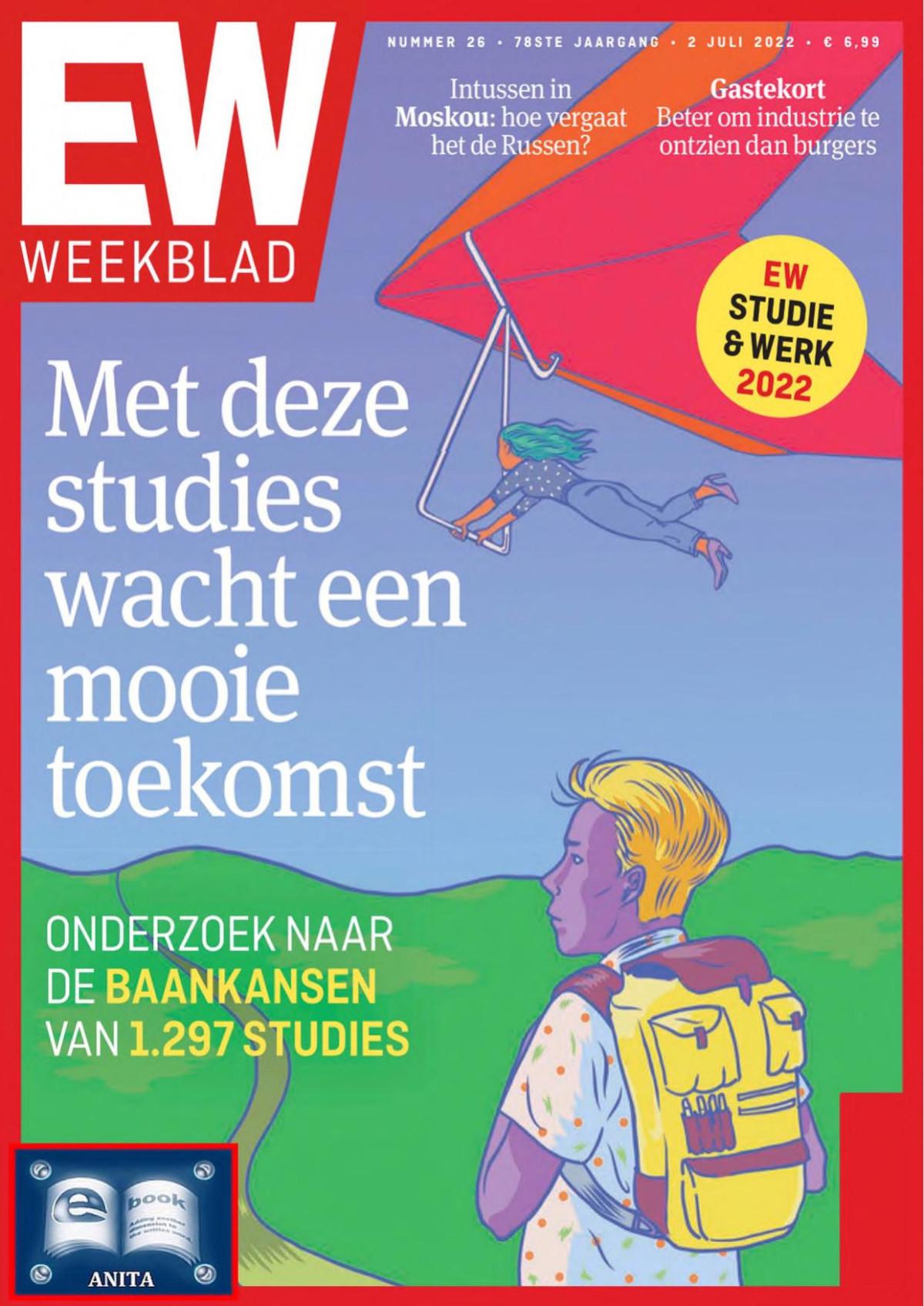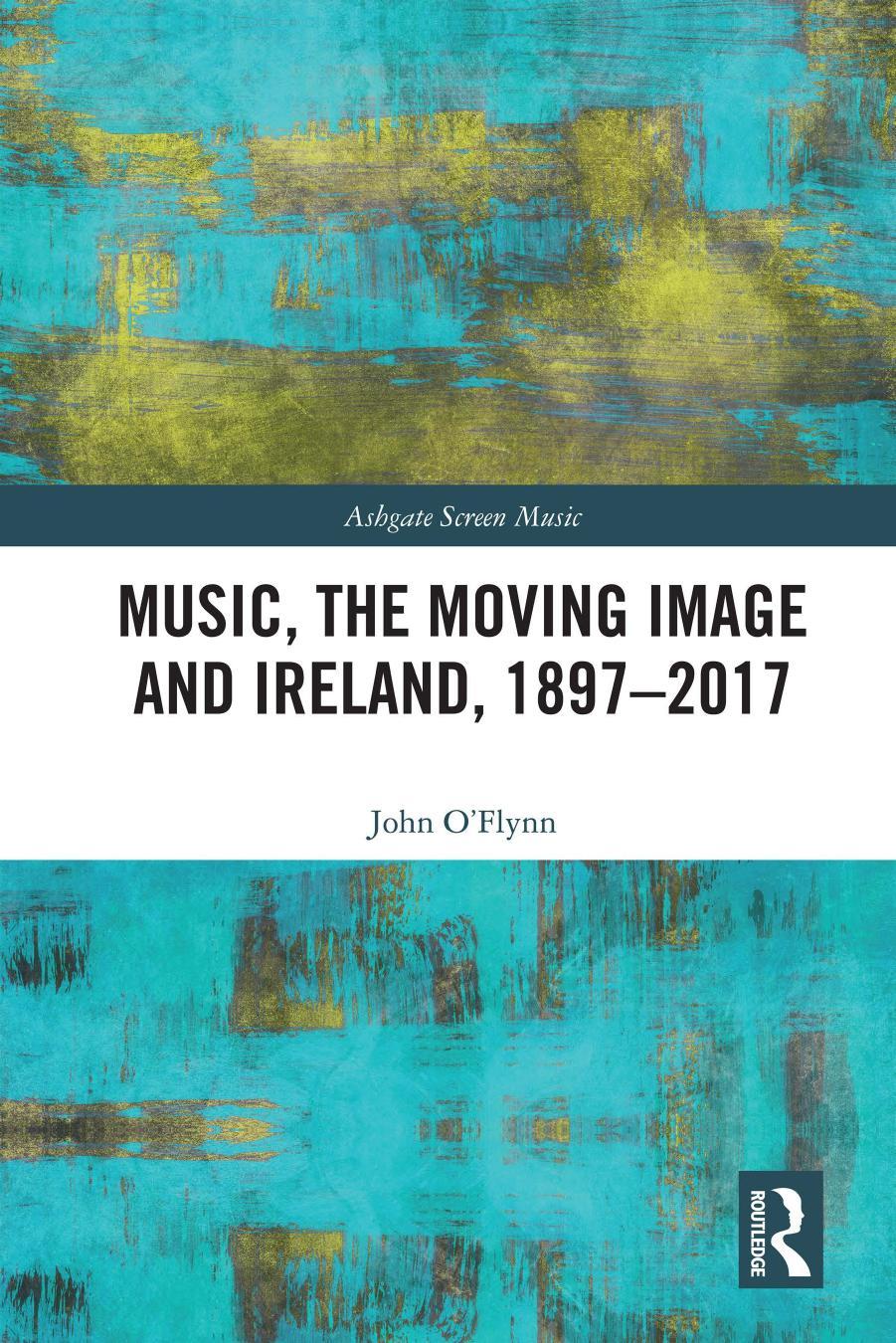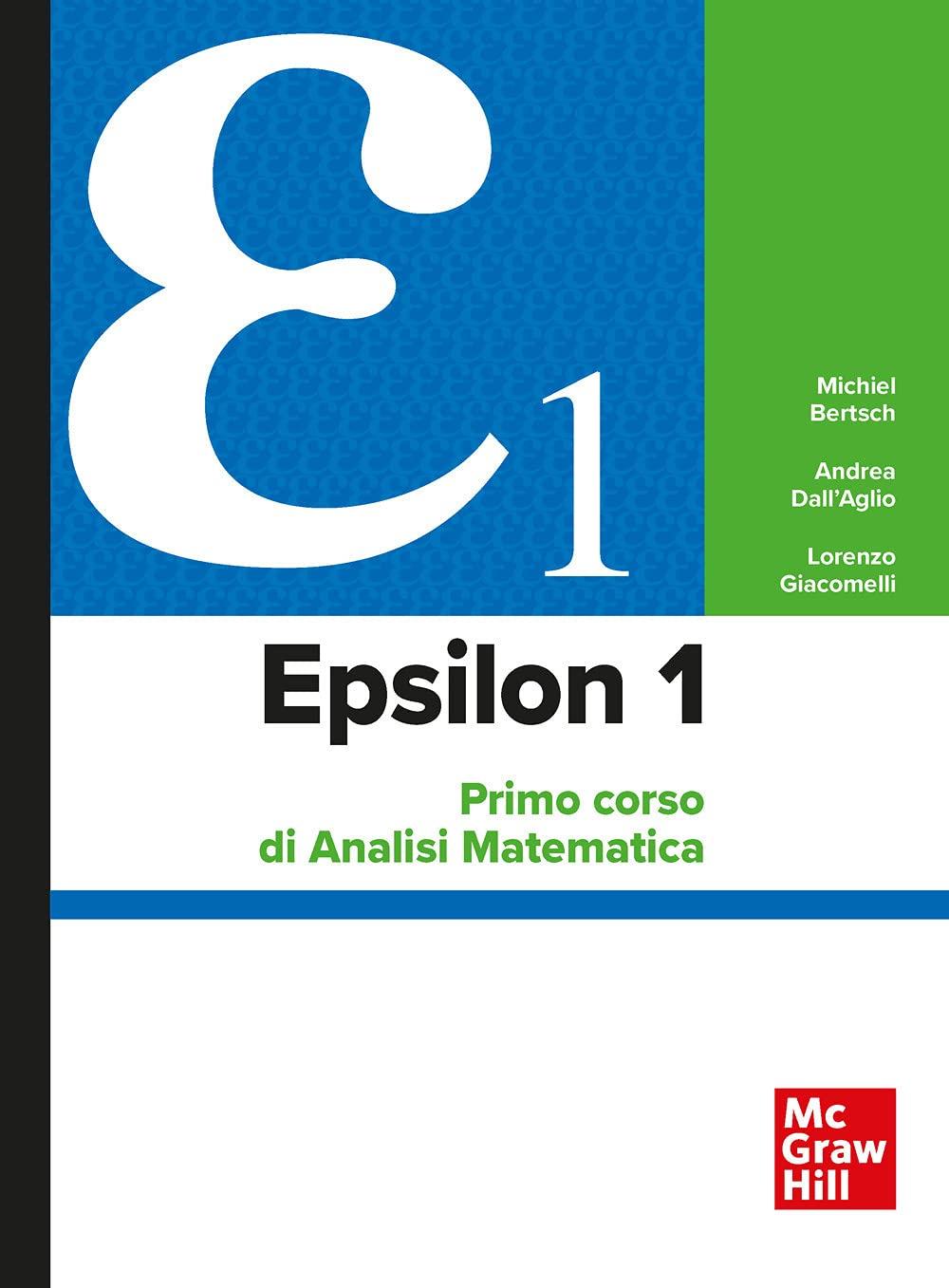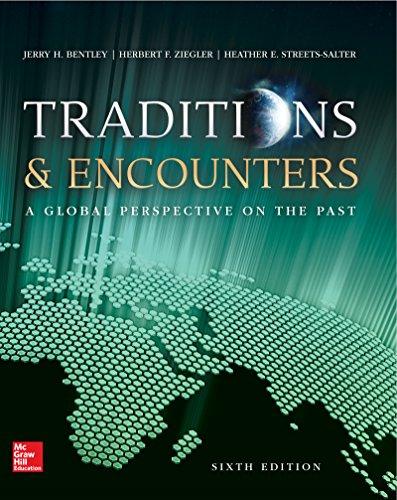Examples and Tables
Examples
1.1 Luca Conforto, Breve et facile maniera d’essercitarsi a far passaggi (1593), 3v, with extrapolated outcomes 20
1.2 Luca Conforto, Breve et facile maniera, 3v, with extrapolated outcomes 22
1.3 Diego Ortiz, Trattado de Glosas (1553) 23
1.4 Giovanni Maria Artusi, L’arte del contraponto (1598), 33 25
1.5 Gio. Maria e Bernardino Nanino, Regole di Contrappunto, Ms. in fol., di carte 78, fol. 22v 25
1.6 Gio. Maria e Bernardino Nanino, Regole di Contrappunto, fol. 22v 26
1.7 Giovanni Battista Chiodino, Arte pratica, 38 27
1.8 Giovanni Battista Chiodino, Arte pratica, 16 27
1.9 Chiodino, Arte pratica, 45 27
1.10 Francesco Rognoni, Selva di varii Passaggi (1620), Part 1, 26 28
1.11 Francesco Rognoni, Selva di varii Passaggi, Part 1, 30, with realisation 29
1.12 Francesco Rognoni, Selva di varii Passaggi, Part 2, 43, with transcription 29
1.13 Riccardo Rognoni, Il vero modo di Diminuire, (1592), Part 2, 10 30
1.14 G.B. Bovicelli, Regole… (ed. Glenton, 2018), 10 31
1.15 Bovicelli, diminutions on Io son ferito, bars 140–end 31
1.16 Adrianus Petit Coclico, Compendium musices (Nürnberg, 1552), gathering H-4v 33
2.1 Table of diminution in Ganassi’s Fontegara (1535, fol. 10v) 46
2.2 Matteo Pagano (1515–1588), Doge’s procession in Piazza San Marco on Palm Sunday (detail) 47
2.3 Fontegara, Table of finger positions 53
3.1 The harmonic series showing the ranges of cor basse and cor alto 66
3.2 Telemann, Concerto in D for Horn, TWV 51:D8 (1708–14), Vivace, bars 11–20
3.3 Concerto ex Dis-dur, Lund no. 11, Allegro, bars 21–24
68
70
3.4 Concerto ex D-dur, Lund no. 13, Adagio bars 30–36 71
3.5 Concerto ex D-dur del Sig. Gehra, Lund no. 17b, Allegro Molto, pickup to bar 48–69 72
3.6 Beethoven, Piano Concerto no. 5, op. 73 (1809–1811) first movement, bars 393–402 73
3.7 Beethoven, Symphony no. 7 (1811–1812), op. 92, second movement, bars 114–122, wind parts only 74
3.8 Beethoven, Symphony no. 8, op. 93 (1812–1813) third movement, bars 52–56 74
3.9 Beethoven, Overture to Fidelio, op. 72, (1814), bars 49–59, clarinet and horn parts only 75
3.10 Beethoven, Leonore Overture no. 1, op. 138, (1807), bars 181–190; horn three and four and clarinet parts only 75
3.11 Beethoven, Symphony no. 9, (1823–1824); third movement: fourth horn in E, bars 82–98 76
3.12 Beethoven, Sonata op. 17 in F major, 1st movement, bars 160–162 77
4.1 Chopin, Nocturne, op. 27, no. 1, bars 1–11 87
4.2 Debussy, “La Cathédrale Engloutie,” bars 16–19 88
4.3 Chopin, Nocturne, op. 27, no. 1, bars 84–85 89
4.4 Chopin, Nocturne, op. 27, no. 1, bars 17–22 92
4.5 Chopin, Nocturne, op. 27, no. 1, bars 26–32 92
4.6 Chopin, Nocturne, op. 27, no. 1, bars 45–52 93
4.7 Chopin, Nocturne, op. 27, no. 1, bars 91–95
4.8 Chopin, Nocturne, op. 27, no. 1, bars 29–40
4.9 Chopin, Nocturne, op. 27, no. 1, bars 45–52
4.10 Chopin, Nocturne, op. 27, no. 1, bars 61–83
4.11 Chopin, Nocturne, op. 27, no. 1, first unit of the cadenza
4.12 Chopin, Nocturne, op. 27, no. 1, second unit of the cadenza
4.13 Chopin, Nocturne, op. 27, no. 1, third unit of the cadenza
4.14 Chopin, Nocturne, op. 27, no. 1, bars 84–101
5.1 Nocturne I, system 1
5.2 Nocturne I, system 2, beginning
5.3 Nocturne III
5.4 Violin calls
5.5 Scrape gesture in piano (Nocturne I, system 4)
5.6 Lorca, Nocturno del hueco, Part II
5.7 Nocturne IV, systems 3–4
5.8 Nocturne IV, systems 1–2
5.9 Ligeti, Étude Book 1 No. 1 “Désordre,” ending.
6.1 Chopin, Sonata for Piano and Cello, op. 65, first movement, bars 1–16
6.2 Chopin, Sonata for Piano and Cello, op. 65, first movement, bars 17–18
6.3 Chopin, Sonata for Piano and Cello, op. 65, first movement, bar 17
6.4 Chopin, Sonata for Piano and Cello, op. 65, first movement, bars 23–32
6.5 Chopin, Sonata for Piano and Cello, op. 65, first movement, bars 43–45
6.6 Chopin, Sonata for Piano and Cello, op. 65, first movement, bars 57–64 139
6.7 Chopin, Sonata for Piano and Cello, op. 65, first movement, bars 60–61 (based on a sketch). After Gajewski 1988 139
6.8 Chopin, Sonata for Piano and Cello, op. 65, first movement, bars 57–67 (Paris: Brandus, [post 1858]). Reproduced from Franchomme’s personal copy 140
6.9 Chopin, Sonata for Piano and Cello, op. 65, first movement, bars 78–80 140
6.10 Chopin, Sonata for Piano and Cello, op. 65, first movement, bars 94–107
6.11 Chopin, Sonata for Piano and Cello, op. 65, first movement, bars 110–111
6.12 Chopin, Sonata for Piano and Cello, op. 65, first movement, bars 110-112. Friedrich Grützmacher (ed.), Fr. Chopins Sämtliche Violoncell-Werke Leipzig: Peters, [ante 1918]
6.13 Chopin, Sonata for Piano and Cello, op. 65, first movement, bars 168–178
6.14 Chopin, Sonata for Piano and Cello, op. 65, first movement, bar 223
6.15 Chopin, Sonata for Piano and Cello, op. 65, first movement, bars 219–223. (Paris: Brandus, [post 1858]). Reproduced from Franchomme’s personal copy
6.16 Chopin, Sonata for Piano and Cello, op. 65, first movement, bars 224–228
6.17 Representation of cadential and passing tones in taksim transcriptions according to Aydemir
6.18 Rast Perde on the G staff
6.19 Phrase without and with Çarpma
6.20 Notating glissandi
6.21 Phrases notated according to their rhythmic groupings
6.22 Groupings annotated on metric phrases
6.23 A pitch contour as represented in Sonic Visualizer
6.24a A makam scale map
6.24b The contour of Example 6.23 projected on the makam scale map
6.25 Double melodic curve
6.26 Complementary staff score and melodic contour
6.27 Transcription of the phrases from 0ʹ20ʺ to 0ʹ28ʺ of Ercüment
Batanay’s taksim improvisation on makam Hüseynî
6.28 Transcription of the phrases from 5ʹ21ʺ to 5ʹ25ʺ of Ercüment
Batanay’s taksim improvisation on makam Hüseynî 156
6.29 Transcription of the phrases from 3ʹ19ʺ to 3ʹ24ʺ, and from 5ʹ21ʺ to 5ʹ25ʺ of Ercüment Batanay’s taksim improvisation on makam Hüseynî
x Examples and Tables
6.30 Transcription of the phrases from 3ʹ02ʺ to 3ʹ07ʺ of Ercüment
Batanay’s taksim improvisation on makam Hüseynî 156
6.31 Transcription of the phrases from 0ʹ34ʺ to 0ʹ40ʺ of Ercüment
Batanay’s taksim improvisation on makam Hüseynî 156
6.32 Transcription of the phrases from 2ʹ21ʺ to 2ʹ28ʺ of Ercüment
Batanay’s taksim improvisation on makam Hüseynî 156
8.1 The cycle of encounter, transformation, and creation 184
8.2 Marvin Gaye’s riff for “Sexual Healing” (1982) and Shwi noMtekhala’s riff for “Ngafa” (2003) 189
Tables
4.1 Communicative/expressive effects in Chopin’s Nocturne, op. 27, no. 1 91
7.1 Time table of the study lab 171
7.2 Scores for use of reflection and the 20 + 5 schedule immediately and one year after finishing the SL 172
7.3 Scores for the assignments stimulating the use of an external focus of attention immediately and one year after finishing the SL 173
7.4 Imagery assignment scores, immediately and one year after the SL (2016: n = 5) 173
7.5 Scores for the general questions about the SL, both immediately and one year after finishing the SL. (n = 12) 173
7.6 Performance assessment by the main teachers (only in 2016: n = 6) 173
Contributors
Juliano Abramovay is a Brazilian music researcher, educator, and guitar player based in the Netherlands. Juliano works at Codarts (NL) as an artistic research coach and as a tutor for the RASL Minor, which is a collaboration between Codarts, Erasmus University College, and Willem de Kooning. He is a PhD candidate in Ethnomusicology at Durham University.
Nuno Atalaia is a Portuguese researcher and musician based in the Netherlands. His work explores the intersections between new media, performance, and the history of the voice. He is Co-director and Founding Member of the musical ensemble Seconda Prat!ca. He is currently completing a doctoral degree within the ERC-funded project “Platform Discourses: A Critical Humanities Approach to the Texts, Images, and Moving Images Produced by Tech Companies.”
Frank C. Bakker (1948), until his retirement in 2013, was Associate Professor at the Faculty of Human Movement Sciences (HMS) of the Vrije Universiteit Amsterdam (VUA), and responsible for the Sport Psychology Program of the Faculty. After his retirement, he was appointed at the Conservatorium van Amsterdam (CvA). In close collaboration with Jan Kouwenhoven and Jaap Kooi, he developed the so-called Study Lab.
Andreas Borregaard (Denmark, 1981) communicates the accordion’s fascinating qualities and palette of expressions to a wide audience as a soloist and chamber musician. He is actively influencing the development of this young instrument’s use and repertoire. Andreas Borregaard is Accordion Professor at the Hannover University of Music, Drama and Media.
Michalis Cholevas was born in Athens, Greece, in 1977. His musical education started at the age of 5, with classical piano, jazz piano, and eastern Mediterranean music studies until his early 20s. He followed MSc studies and completed MA studies in music performance, the latter, for which he holds a PhD title in makam music analysis.
Bart Fermie (percussionist and educator) studied Cuban and Brazilian percussion in New York, Havana, and Amsterdam. Apart from teaching at the Amsterdam and Rotterdam Universities of the Arts, he invented instruments for Pearl
Percussion. Fermie has collaborated with international artists like Branford Marsalis, Randy Crawford, and Maria Schneider.
Dr. Job ter Haar studied at the Royal Conservatory in The Hague. He is one of the founding members of the Ives Ensemble, has toured major concert halls in Europe and the USA, and has recorded a large number of prize-winning CDs. He has performed with groups such as the Van Swieten Society, the Hortus Ensemble, and the Archduke Ensemble. Next to his performing career, Job ter Haar works at Codarts Rotterdam as a research supervisor and at the HKB in Bern as a cello teacher.
Jan Kouwenhoven was an oboist for the Royal Concertgebouw Orchestra from 1973 to 2015 and taught at the Conservatorium van Amsterdam until 2022. During his time as a teacher, he began to investigate the applicability of sport sciences to music performance. To this end, he developed a course with Frank Bakker and Jaap Kooi called the “Study Lab,” which was intended to help students deliver peak musical performances under pressure.
Daphne Leong’s work, which focuses on rhythm, analysis and performance, and music since 1900, appears in her book Performing Knowledge: TwentiethCentury Music in Analysis and Performance; in journals such as Journal of Music Theory, Perspectives of New Music, and Music Theory Online; and in edited collections. Leong is an active pianist and chamber musician, whose performances and recordings include premieres of current music.
Stefano Malferrari received his diploma with honours from the conservatoire “G. Rossini” of Pesaro under the guide of Franco Scala. After that, he continued his studies with the pianists Jörg Demus and György Sándor. Classified among the winners of a few international competitions, he gave concerts in Europe, central and south America, and Asia. Besides teaching at the conservatoire “G. B. Martini” of Bologna, he held courses and conference-concerts for several Italian musical institutions. Moreover, he is Director of the book series “Chiavi d’ascolto” [Listening Keys] (Albisani Editions).
Luca Marconi (1960–2019) taught “Music Pedagogy” and “History of Popular Music” in the “Luisa D’Annunzio” Conservatory of music in Pescara (Italy). He has published on the relationship between musical communication and the analysis of music; in addition, he has published the volume Musica Espressione Emozione (CLUEB, Bologna, 2001) and, with Gino Stefani, the book La melodia (Bompiani, Milano, 1992).
Valle González Martín obtained the Oboe Bachelor’s Degree in 2014 from the Real Conservatorio Superior de Música de Madrid. Later on, she moved to the Netherlands, where she completed the Oboe Master’s Degree and the Bachelor’s program in Baroque Oboe at the Conservatorium van Amsterdam, complementing these studies at the Hochschule für Künste in Bremen. She currently combines music teaching and oboe playing with modern and historicist groups.
Contributors xiii
Josué Meléndez Peláez (cornetto and recorder) studied music at institutions in Costa Rica, Guatemala, Mexico, the Netherlands, and Switzerland. He founded the Festival Santo Domingo de Música Antigua and is Founder and Co-director of the group I Fedeli. Meléndez Peláez is a specialist in the improvisation of Renaissance and Baroque music and teaches cornett, diminution, and improvisation at the universities of music in Frankfurt (HfMDK), Trossingen (HFM), and Bremen (HFK).
Catherine Motuz pursues an active career as a performer, teacher, and scholar. She is a co-artistic director of Ensemble I Fedeli and has performed and recorded with numerous ensembles including the Freiburger and Amsterdam Baroque Orchestras, Bach Collegium Japan, Concerto Palatino, Abendmusiken Basel, the English Cornetto and Sackbut Ensemble, and ¡Sacabuche! Since 2018, she has taught at the Schola Cantorum Basiliensis, where she studied historical trombone with Charles Toet from 2004 to 2007.
Tímea Nagy (Hungarian poet, recorder, and cornetto player [1985]) obtained her recorder diploma from ESMuC, Barcelona, and Master’s degrees in cornetto from HEM, Geneva. She has collaborated with ensembles such as Cappella Mediterranea, Concert Brisée, Collegium 1704, Lucidarium, and Sollazzo. Grant holder of the Hans Wilsdorf Foundation (Geneva) and the Giorgio Cini Foundation (Venice), she worked as Research Assistant at HEM, Geneva, for the project “The Ganassi Enigma,” directed by William Dongois.
Raôul R.D. Oudejans is (Associate) Professor of Sport and Performance Psychology, Department of Human Movement Sciences, Vrije Universiteit Amsterdam and Centre of Expertise Urban Vitality, Amsterdam University of Applied Sciences, the Netherlands. His main research and teaching areas are perceiving and moving in sports and other high-pressure contexts such as police work and performing arts, with an emphasis on the psychological factors involved in performing.
Michiko Theurer uses sound, visuals, words, and movement to cultivate spaces for shared wonder and community. Recent musical collaborations include premieres of ensemble works by Meredith Monk, Tyshawn Sorey, and Susie Ibarra and a ceremony for collective witnessing at the Boston Public Library. As a PhD candidate in musicology at Stanford University, she is currently producing a multimedia companion for liberatory practice.
Barbara Titus is Associate Professor of Cultural Musicology at the University of Amsterdam (UvA). She is the author of two books, Hearing Maskanda (Bloomsbury 2022) and Recognizing Music as an Art Form (Leuven UP 2016), and she is the curator of the Jaap Kunst Collection at the UvA.
Shishani Vranckx is a multi award-winning and internationally touring artist whose versatility in music transcends genres and cultures. Her work expresses a strong sense of social consciousness and intersects between research and art performance. Her academic writing focuses on Namibia’s cultural heritage. She has founded various projects (such as Namibian Tales, Miss Catharsis & Sisterhood) highlighting marginalised perspectives.
Contributors
Kathryn Zevenbergen’s skills on both the historic and modern horn keep her in high demand as an orchestral and chamber music player. She holds two master’s degrees, one in Horn Pedagogy from the Zurich School of the Arts, and one in Early Music Performance from the Amsterdam Conservatory. She studied with Nigel Downing, Glen Borling, and Teunis van der Zwart. Kathryn performs regularly with La Chapelle Ancienne (Switzerland) and Solomon’s Knot (UK) while living and teaching in Germany.
Teunis van der Zwart is one of the leading historical horn players of his generation. He is an internationally renowned specialist in historically informed performance practice and active as a soloist, chamber music player, teacher, and speaker. Van der Zwart is a principal subject teacher and Head of the Early Music Department at the Royal Conservatoire The Hague.
Preface
Today, research into musical performance seems like a self-evident undertaking. And yet, the ascendancy of performance-related research has been rather late within the larger discourse of musical research, having begun in earnest in the 1970s and having established itself as a genuine field of study only in the 1990s. Because of the relative lateness of this field, a number of crucial questions remain unaddressed. Why, for instance, do most musical performers and musical researchers continue to inhabit divergent epistemic spaces? How have some tried to overcome these imagined spaces? To what extent is the act of musical performance coextensive with the act of doing musical research, and vice versa? And, at what point in the research process can a performative act transform into a scholarly one, and a scholarly act into a performative one? These, and other related questions, form the central focus of Music Performance Encounters: Collaborations and Confrontations.
Based on a symposium organised at the Muziekgebouw aan ‘t IJ in Amsterdam, the Netherlands (Researching Performance, Performing Research, October 2017, henceforth “RPPR”), this volume brings together twenty-one musicians and scholars to reflect on the relationship between musical performance and musical research today, as well as to highlight the manifold ways in which “performers” and “scholars” interact. To this end, each multi-authored chapter offers a fresh perspective on a particular topic in music performance studies: improvisational traditions, (historical) performance practices, analysis and performance, sports psychology, crosscultural musical interactions, embodiment, interdisciplinarity, and institutional challenges. The voices offer not only a polyphony of perspectives, but they also foreground divergent strategies towards the very discursivity of musical thought.
In recent years, and most notably in places such as the UK, Australia, and the Scandinavian countries, research into musical performance has gained momentum through so-called “artistic” or “practice-based” approaches, but it has also become an integral part of traditional disciplines such as historical musicology, ethnomusicology, and music analysis. In addition, areas such as cognitive science and sports psychology have sought to understand better the nature of musical performance as an activity of the human mind and body. And given the greater “performative turn” in music studies as a whole, musical-scholarly practice has itself undergone vast transformations over the past thirty years, in which attention has been paid not
just towards the objects of research but also towards the ways in which scholars go about practising their métier—in other words, how they perform their research.
As indicated in this book’s subtitle, a central aim of this volume is to explore the manifold collaborations, but also the possible confrontations, that such research engenders. In contrast to other studies in music performance research, this volume as a whole will highlight the complex interactions and negotiations between scholarly and performative modes of discourse, whether they are expressed through multiple individuals or embodied within one and the same person. In doing this, it allows for a kaleidoscope of perspectives and discursive voices: such “voices” can be heard and seen not only through the diverse musical topics on offer but also through the many divergent approaches to writing, performing, and “researching” more generally.
Music Performance Encounters consists of four main parts, with a total of nine chapters: (I) Tools of (Historical) Performance Practice; (II) Scholars and Performers in Dialogue; (III) Institutional Endeavours; and (IV) Cultural Barriers and Embodied Knowledge. Each main chapter (with the exception of Chapter 9) is multi-authored and involves the collaboration of a scholar, a performer, and/or a performer-scholar.
In Part I, three contributions from the area of historically informed performance practice will centre around both the physical and conceptual “tools” that give rise to performance-related questions, such as musical instruments, historical treatises, diminution practices, or the interaction with other artforms. Part II zooms in on scholars and performers collaborating at the individual level. Devoted to the musical nocturne, each chapter involves two individuals grappling with performance and analytical issues in a single piece of music: respectively, Frédéric Chopin’s Nocturne op. 27, no. 1 in C minor, and George Crumb’s Four Nocturnes. Also divided into two chapters, Part III takes a look at scholars and performers undertaking research on behalf of supporting institutions in the Netherlands: in one case, by bringing together musicians within a single institution (Codarts Rotterdam) to explore what it means to “learn from an absent teacher”; in the other, by bringing the insights from sports psychology to bear on the study and performance of music, in a collaboration involving multiple institutions (the Conservatorium van Amsterdam, the VU University, and the Amsterdam University of Applied Sciences). Finally, the two chapters of Part IV explore issues of power, prestige, and embodiment between different cultures, and demonstrate techniques that expose musicians to new types of physicality in their performances of contemporary composition.
Because this volume brings together such a wealth of musical traditions, cultures, practices, and methodological perspectives, we felt it necessary to provide the readership with more of the critical context surrounding each individual contribution, and to elaborate on some of the underlying themes of the volume as a whole—that is, beyond what a preface or introduction might offer. We therefore precede each of the four parts with a “Critical Interlude,” as a way of both contextualising more deeply the contributions offered in each part and offering a critical comparison of those chapters vis-à-vis the others. While other recent
Preface xvii
multi-authored volumes in musical performance studies have made similar use of “interventions” and “insights” from experts in the field, in the case of Music Performance Encounters the interludes are written solely by the editors—in this way, our role goes beyond the editorial, as we guide the reader more actively through the volume. With these critical interludes in place, along with our introductory chapter, we thus seek to incorporate our own narrative voice into the main thread of the book.
Another indispensable feature of this book, though one that has become part and parcel of many performance studies volumes, is the audio and visual component. Because the 2017 symposium was recorded professionally, each contribution will include not just a written text but also audio-visual material, drawn either directly from the symposium or (in the case of a revised or expanded version) from a later recording. These musical contributions offer not only polished performance products but also real-time processing of musical material: be it a performer encountering a score for the first time; performer-scholars in rehearsal mode; or a scholar and performer in direct dialogue in front of an audience. All original video material is offered on a public YouTube channel (https://www.youtube.com/@musicperformanceencounters). The full URL to the playlist for each chapter is offered in the first endnote to each respective chapter, and hyperlinks are given at the first mention of each MPE video (e-book only). Supplementary text and other materials are provided through the online portal hosted by Routledge, and will be indicated at the appropriate place in the text (www.routledgemusicresearch.co.uk). Links to external sites will be provided in the endnotes within the text (without hyperlink). These online resources are construed as an integral part of this volume.
Since the publication of this volume comes roughly six years after the initial symposium, the question may arise as to whether the recorded material is still relevant, and whether it will remain relevant in the future. Like all published “texts,” some of the contributions will maintain a certain time-stamp, as they either were produced at the 2017 symposium or were recorded on a separate occasion. This is the case for Chapters 3, 4, 5, 7, and 9. However, some of the contributions are still in the process of development or will invite continual interactivity and updating. While Chapters 1, 2, and 6 will all include media content that was made in 2021 or later (in addition to incorporating content from the symposium), Chapter 8 blends pre-recorded material (from various times and venues) and actively invites readers to respond to their material. Because we have chosen to use a public YouTube channel, the readership is encouraged to interact with this volume by providing comments, links, and other forms of response through this channel.
As mentioned above, the selection of musical repertoire, cultures, and methodologies in this volume is highly diverse. It includes a variety of practices, theories, and traditions from the sixteenth through twenty-first centuries, and from various places on the globe. It is because of such variety that the kinds of “voices” that are brought to bear on these practices are also multiplicitous, whether they be academic, anecdotal, performative, pedagogical, poetic, or scientific (with all of the slippery connotations such designations bring). In this way, we did not privilege
one kind of voice over another, but instead allowed for (and indeed encouraged) a productive disparity between the various modes of expression and articulation from the authors. We hope that the reader too will appreciate such a diversity of approaches and voices.
This, we believe, is what will distinguish Music Performance Encounters from many other volumes on musical performance—it is, in a word, a more “grassroots” and eclectic approach to the topic. Thus, rather than attempting to streamline the methodology between the contributions, or to create a volume in which individual authors weigh in on a particular topic, we wish to confront readers with a more diffuse and heterogeneous assortment of musical identities, backgrounds, and aspirations, with the aim of providing a space for practitioners, educators, and scholars to express their voices in a multitude of ways: through words, images, bodily movements, and of course sounds. We thus firmly believe that such a volume will provide an important contribution to the ever-growing community of musicians and scholars concerned with performance and artistic research. And while it was not a deliberate choice of the volume, many, but not all, of the contributions are from performers and scholars operating within the Netherlands. In this way, the volume partially documents the variety of performance-related research practices coming out of this country.
In the end, this book is intended for anyone interested in the intersection of academic and performance research: scholars, teachers, students, and practising musicians. Given the diversity of topics, repertoires, cultures, and strategies, we hope that the book will be of use for a wide range of people and for both research and educational purposes. If anything, it aims to offer a space in which the many modes of music performance research can interact with one another.
John Koslovsky Amsterdam, the Netherlands 31 August 2022
Introduction
“Who Are You?”: On Performers, Scholars, Masters, and Pupils
Michiel Schuijer and John Koslovsky
On Performers and Scholars (Michiel Schuijer)
No art has engendered so much written scholarship as music. And yet no art has divided scholars and practitioners more. These seem like two contradictory observations, but they are not. In medieval times, the word “music” could refer to different fields of endeavour. Apart from being a performing art, music was also a science, an object of intellectual speculation presumed to offer a window on the natural world. As such, it was an integral part of the medieval university curriculum. Therefore, the music scholar (or musicus), authoring treatises on musical sound, proportion, and tuning, was many steps higher on the societal ladder than the practising musician (cantor). The former was on a par with lawyers and clerics. The latter was ranked between sorcerers and gravediggers to judge from Tommaso Garzoni’s Piazza universale di tutte professioni del mondo (1586).1
Has this early division of labour in the music field sealed the relationship between music scholars and practising musicians in Western society? Does it have a bearing on the ways representatives of these groups look at each other’s occupations today? Higher education still offers separate pathways for both. And these pathways may even run through different kinds of institutions: on the one hand, conservatories, academies of music, and Musikhochschulen; on the other, liberal arts colleges and universities.
However, beneath this institutional landscape, fault lines have been shifting. Diverse occupational communities have successfully claimed a stake in producing knowledge and developing advanced education. This is not a recent phenomenon. In the nineteenth and twentieth centuries, the rise of such professionalism led to a proliferation of practice-driven degree programs at universities and vocational schools combining practical training with theoretical education.
An outstanding example is how primary and secondary school teachers attained professional status. When in the late eighteenth century national states took control of their training, this gave them greater autonomy towards the local communities in which they were employed. And out of the efforts to regulate the practice, develop a relevant knowledge base, and establish general teaching standards, has grown a proficient and self-reliant community of pedagogues. However, what ultimately defined pedagogy as a professional discipline was not the body of knowledge and
Michiel Schuijer
and John Koslovsky
skills this community maintained, but the broader relevance of this body and its capacity to inform other fields, like psychology, sociology, and educational sciences. António Novóa, an eminent Portuguese educational scholar and administrator, has explained what paradox this created. When teaching elevated to the status of a profession, this led to a division between university-based educational scholars on the one hand, and highly skilled practitioners in the classroom on the other, resulting in a “de-legitimation of the latter as producers of knowledge.”2
In this respect, engineers fared better, especially in Germany, where technical colleges (Technische Hochschulen) fought a long battle for their societal recognition. The rapidly growing industry in the German states from 1850 onwards and the need for a robust infrastructure to support it made the supply of engineers eminently important. Yet, in Germany’s rigidly stratified class system, graduates of the technical colleges did not hold the same status as those of the university. Therefore, in 1899, emperor Wilhelm II conferred the right on these colleges to award the doctoral degree for original research, which was until that time the prerogative of universities. There has been debate about whether the colleges have brought technical education under the rule of science—to the detriment of the craftsmanship and tacit knowledge of earlier generations of engineers—or instead succeeded in uniting engineering practice and scientific theory.3 But this debate itself has become polarised between academic engineers and graduates from nonacademic engineering schools, who often found themselves competing for the same positions.4
These two examples show how professionalism could arise in various occupational fields and help raise their societal prestige. Meanwhile, institutional structures continued to separate the “thinkers” from the “doers,” hampering their conversation.
As for this rising professionalism, music, it must be said, was a slow starter. The music conservatories mushrooming in nineteenth-century Europe did not make a similar dent in professional society as the teacher institute or the technical college. In their founding acts and annual reports, some compared themselves to a university, like the Royal College of Music in London (founded in 1883)5 and the Amsterdam Conservatory (founded in 1884).6 Others mentioned the “scientific” status of the music profession (Leipzig, 1843). Still, it was unclear what that meant for the practice and study of music.
For example, in Leipzig, the conservatory founders (Felix Mendelssohn was one of them) stated that “theoretically and practically, its instruction covers all branches of music, considered a science and art.”7 Rebecca Grotjahn has argued that it was not so much the university as the German gymnasium that served them as a reference point. The new institution provided budding musicians a place for their Bildung. 8 Judging from the continuation of the proclamation, it offered a comprehensive program of general learning, including harmony and composition, instrumental and vocal performance, and “lectures on musical literature, aesthetics, and other parts of the science of music [Musikwissenschaft].” Unfortunately, this ambitious program didn’t fulfil its promise, partly because of an over-permissive entrance policy of the conservatory, resulting in a highly uneven student-teacher ratio and a total lack of supervision, and partly because of a rather exclusive and
unyielding orientation on the Viennese classical repertoire.9 In its conservatism, the institute equalled the old universities of England.
In 1895, the music scholar Hugo Riemann, an alumnus of the Leipzig conservatory, uttered a scathing critique of the education offered at German conservatories. He wrote that these schools took no responsibility for students’ general education and did not enable them to grow as articulate artists, knowledgeable professionals, and autonomous citizens. Instead, they gave them “exclusive training in applied music.”10 Riemann was not as harsh as Anton Schindler, Beethoven’s dodgy first biographer, who had scolded such schools for breeding a “musical proletariat.”11 But his critique was all the more relevant, coming from one aiming to establish a meaningful corpus of professional knowledge in music.12
And it was to remain valid for a considerable time, too. Seventy-one years later, Allen Sigel proved Riemann’s judgment to apply still to some European conservatories. Sigel, an American clarinetist teaching at the State University of New York at Stony Brook, had visited six leading institutions in Europe during the 1966–1967 academic year and reported his findings in an issue of the College Music Symposium. Although impressed by the level of musical competency students were exposed to, he marvelled at the limited range of the education most European conservatories offered. The only requirements common to all programs, Sigel noted, were the study of an instrument and the training of sight-reading and aural skills. “Other subjects, such as harmony, counterpoint, orchestration, conducting, music history, secondary instrument, ensemble, and non-music subjects are not uniformly required of, or available to, all students.”13
These conditions have not been conducive to the involvement of practising musicians in the pursuit of knowledge and collective understanding. Indeed, they helped the medieval opposition of music practice to scholarship survive, as noticed by sociologists concerned with professional culture. “Success in music,” Jon Frederickson and James F. Rooney wrote in 1990, “is measured through readily observable skill, not through certification of knowledge. Doing is more important than knowing.”14
But is it really? Experienced musicians generally know what they do. Moreover, there is a vast body of reference to prove it. Alongside speculative music theory— whose revered traditions of canonics and the harmony of the spheres started to wane in the seventeenth century (but at the same time veered towards the study of acoustics and later tone psychology in the nineteenth century)—other discourses have evolved. First-hand musical knowledge and experience have been gathered in treatises on composition, orchestration, keyboard improvisation, and accompaniment; in guides to control musical affect and expression; in taxonomies of musical genre and style; and in instrumental and vocal methods. In addition, more informal written documentation survived that sheds light on music performance considerations: private correspondences, compositional sketches, and annotated performance materials.
Not all music performance traditions have left such a legacy of writing. And extant written legacies, such as those engendered by the practices of notated music in Europe and the Americas, continue to raise questions, mainly, and not surprisingly,
Michiel Schuijer and John Koslovsky
when it comes to performance. Curiously, however, their study became the province of a new form of music scholarship, musicology, which developed not as a consequence of the professionalisation of musicians but modelled itself after academic disciplines such as history, philology, ethnography, and the natural sciences. It looked at scores and relevant textual sources for a historically and theoretically informed understanding of musical practices. It offered music publishers guidance to supply reliable performance materials. And it helped articulate certain standards of musical artistry and excellence.
The person to whom musicology owes its birth certificate, Guido Adler, wrote that this new academic discipline distinguished itself from other, more established ones not by its approach but solely by its object.15 With this remark, he implicitly granted music scholars a superior discursive position compared to performers, whose practice was different from that of traditional scholars altogether—that is to say, in both its object and approach. It is important to note that Adler and other pioneering musicologists had received a great deal of musical education (Adler studied with Anton Bruckner at the Vienna Conservatory) but had earned their academic credentials in disciplines such as law, history, theology, or philosophy.16 In that respect, they served as role models for many future scholar-performers. Combining a diploma in music performance or composition with a related university degree would become a particularly successful inroad to music scholarship.
At the same time, the conjunction “scholar-performer” suggests that, in the words of Frederickson and Rooney, the music occupation indeed had “failed to become a profession.” It offered no rewards for performers advancing new knowledge, skills, and technologies and exploring music’s broader relevance. Instead, self-motivated individuals pursued such aspirations on their own initiative. The extent to which educational institutions facilitated this differed from country to country. Schools of music accommodated by universities, or conservatories collaborating with them, offered resources that could nurture young musicians’ professionalism. Such institutional relationships had been common in the United States, which explains Allen Sigel’s surprise at the curricular insularity of most of the European conservatories he visited in the 1960s. Only a single institution, the Detmold Musikhochschule, had struck Sigel positively. It offered students “a good general education, a broad musical education,” and they developed “true expertise” in a specific musical area.17
This was no coincidence. In the preceding decades, many German conservatories, music schools, and music academies had been transformed into Musikhochschulen. As such, they held a status equal to universities before the law. The German Länder ministers of education and cultural affairs issued a proclamation to that effect in September 1967.18 This status did not alter the primary allegiance of these institutions, which still was to the teaching of talented young musicians. But it mandated them to secure an appropriate level of general education in the earlier phases of study. From the early 1980s on, they could also award doctoral degrees in musicology and music pedagogy.19
In Britain, on the other hand, the path for practising musicians to contribute to knowledge, scholarship, and professional development was circuitous, requiring
them to combine two studies or accumulate them one after the other. Here, the 1992 Further and Higher Education Act brought change. It introduced a single funding structure for universities, polytechnic schools, and a select number of independent colleges.20 Under the terms of the Act, polytechnics could adopt the title of university. Consequently, their music departments could apply for research funds and award the full range of academic degrees to philosophiae doctor. The same held for independent professional music schools, although offering a PhD required a liaison with a university in most cases.
Today, similar arrangements have emerged throughout Europe and beyond: art academies with university status, whether or not renamed “universities of the arts” or “universities of music and performing arts,” like in Germany, Austria, and Finland; conservatories amalgamated with universities, like in Australia and New Zealand; music and other art academies that have created doctoral programs in partnership with one or more universities (France, Belgium, the Netherlands); and research universities offering artistic doctoral degrees beside scholarly ones (Sweden). These arrangements reflect a trajectory of higher education in the past decades towards greater accessibility and comparable levels of achievement across domains. But they also speak to the role of research and experimentation in modern art practice itself, in its constant search for meaning and value.21 By furthering “artistic research”—or “(artistic) practice as research,” as it is called in Britain— they carved out a space for the creative and performing arts to contribute to professional society as well as to artistic culture.22 Thus, like teachers and engineers before them, artists could define, claim, and develop, within the academy, a domain of knowledge hitherto deemed mainly “practical”—a domain, moreover, that had been valued precisely because of its qualities resisting academisation.23
It would seem that multiple avenues for the professionalisation of musicians and their involvement in scholarly practices are now available. Have they helped dissolve barriers between music scholars and musical performers at long last? Have they led to more integration between their métiers? The answer is not an unequivocal yes or no. Such barriers still exist, despite the avenues passing over them. They involve not only institutional cultures and practices but also professional identities. And with the latter come special skills, research interests, modes of learning and communication, and definitions of achievement. There are performing artists whose work is explorative and breaking new ground but who are wary of having to meet standards of academic accountability. And there is formal scientific research that can be highly relevant for musical performers without requiring their expertise. (Performance psychology is a case in point here.)
Moreover, music scholarship itself has been divided all along. Besides the study and interpretation of documented legacies of music and musical thought, it has spawned other methods of knowledge acquisition: methods that concern oral music traditions (ethnographic field study and participant observation) and methods tailored to the study of music perception and cognition (experimentation in laboratory settings). This division of labour and expertise has long prevented musicology from discussing music as performance more generally. Ethnomusicologists were better equipped for this than historical musicologists and music theorists, who, as
Michiel Schuijer and John Koslovsky
a result of their longtime involvement with questions concerning notated music, tended to view performance as a mere act of delivery. Those thoroughly trained to read and interpret scores, lead sheets, tablatures, etc., often lacked the means (or the interest) to come to terms with something as ephemeral as a performance event—let alone bring performance knowledge to bear on other fields of inquiry. However, in the last thirty years or so, performance has become an area of interest for music scholars of all stripes. In fact, it has evolved into a distinct branch of music scholarship, cutting across divisions of genre and culture. With performers of early music addressing issues of performance style, historical recordings creating diversity in the music supply market, and pop, jazz, and improvised music sparking musicological interest, new avenues for music research opened besides those concerned with the agency of the composer and the score. While such research was facilitated by technology to extract relevant data from recorded performances, it had to develop a critical apparatus to deal with the mediating effects of audio recording and studio production. In other words, it had to take multiple agencies into account, which was unusual in studies of western art music. It is no coincidence that those who made a name for pioneering such research, like Dorottya Fabian, Nicholas Cook, Robert Philip, and John Rink, came from precisely this background.
Cook has traced the impetus for studying performance in other areas than music, even beyond the performing arts. He situated this practice as part of a performative turn in all humanities and social sciences, which had already led to such divergent outcomes as John Austin’s speech act theory, developed in the 1950s, and Judith Butler’s book Gender Trouble from 1990.24 Following these two authors and others who have applied the concept in their fields of study, like literary theorists and cultural anthropologists, we can see performance as a constituent of all social and language behaviour and as the expression of a specific functional knowledge. It is how one projects one’s identity in the public space, as a representative of a culture or social class; as a member of a gender or age group; or as an artist, scholar, or other professional.
Seen thus, performance may constitute the common ground between a number of disciplinary domains, and it may even form the locus of knowledge for all aspects of musical activity—playing, writing, thinking, and moving. It now remains to be discussed how such musical knowledge is imparted by its various practitioners; or better, to expose the roles we often play when in the process of creating such knowledge. Who, in fact, is entitled to impart musical knowledge?
On Masters and Pupils (John Koslovsky)
For all the adulation they typically invite, masters sometimes get a bad rap. In the most radical of interpretations, the very word “master” (and related terms like “mastery,” “masterwork,” and so forth) runs the risk of carrying connotations of unequal power relations, class distinction, suppression, social inequity, cultural superiority, hegemonic signification, and domination along sexual and racial lines. Friedrich Nietzsche, whose ideas on master and slave morality would go on to
inspire generations of critical cultural and social theory, described the matter in a brutishly straightforward fashion:
My idea is that every specific body strives to become master over all space and to extend its force (—its will to power:) and thrust back all that resists its extension. But it continually encounters similar efforts on the part of other bodies and ends by coming to an arrangement (“union”) with those of them that are sufficiently related to it: thus they then conspire together for power. And the process goes on—25
Better avoid the word “master” altogether, one might think. And yet, the master concept engenders a wholly different set of connotations when transposed into the context of the “master-pupil” relation. As a tradition that can be traced back to just about any culture, the master-pupil relation carries in its ideal form the imparting of knowledge or skill from one human being to another. It is in one sense a rite of passage, involving trials and tribulations of all sorts; in another sense, it is an act of sharing that brings the master and pupil into an ever closer bond. And while connotations of “will to power” are lurking even here, the master-pupil relation can involve moments of collaboration and even productive confrontation, whereby both the “pupil” and the “master” walk away with something of mutual benefit, and even alternate roles with one another. In fact, we all act out roles as “masters” and “pupils” at every moment of our lives—even the most experienced practitioner or knowledgeable scholar can still take on the role of pupil, and often in the most unexpected of ways. So, whether we play the role of master or pupil at any given moment, the process is by any calculation one of the most human and indeed humane endeavours we can ever undertake.
In some sense, this book is a testament to the master-pupil relation and the ways in which such a relation can manifest itself in the study of music performance (in the broadest sense, as described in the previous section). As in other traditional trades and skills (those of merchants, craftsmen, martial artists, and the like), the acquisition of musical skills and knowledge has functioned largely by way of individual transmission. Professional music conservatories continue to thrive on a model in which an expert imparts a knowledge to which only a chosen few are privy, be it from an instrumental or vocal tutor, a composition or conducting teacher, or even a teacher of music theory. Even in academic settings such as universities, the masterpupil system plays a vital role in the formation of a young mind, for instance, in the form of thesis advisors and individual academic tutors. And these are just institutionalised examples: far from being an antiquated form of knowledge transfer, one could argue that the master-pupil system is still alive and well, even within the more democratically oriented structures of present-day institutes of higher education. And for us, this is an aspect of human endeavour that need not be shunned or expunged—in its right form, it can provide a source of nourishment and betterment for both the pupil and master.26 It is thus with an eye towards masters and pupils that we can begin to engage the contributions to this volume.
Michiel Schuijer and John Koslovsky
To begin with, there are tangible forms in which the master-pupil relation plays out in this volume. Many of the authors, for instance, once shared some form of direct teacher-student relationship, which has now evolved into a collaboration on genuinely collegial grounds. These include the chapters by Zevenbergen and van der Zwart (Chapter 3), by Theurer and Leong (Chapter 5), by Cholevas and Abramovay (Chapter 6), and by Titus and Vranckx (Chapter 9). This was an unexpected bonus to the volume, as it highlights how a relationship between a former teacher and a pupil can develop over time, whereby the original roles played by each protagonist can shift seamlessly. These relationships offer a prime example of how research ideas can emerge from “the ground up.”
But even for those co-authors who never shared a formal relationship as teacher and student, there is still a sense in which each contributor in one moment plays the role of master, but in the next moment becomes the pupil of the other. A good example includes the contribution by Marconi and Malferrari (Chapter 4): both are professionals in their own right, and had different professional paths before their collaborative project. But, when coming together, they had to negotiate a space in which each played both master and pupil with one another. As we describe in more detail below (Critical Interlude 2), the manner by which each of these protagonists plays out his respective role is indicative of the ways in which a traditional binary between scholar and performer can still lead to new insights, even if those insights (and their consequences) need to be teased out (i.e., performed) by the reader.
And then there are the more intangible (but no less pertinent) forms of the master-pupil relation, in which the interlocutor (the “author” of the essay) searches for a place within a vast, discursive matrix that brings together both textual and non-textual forms of knowledge: on the one hand, playing the role of pupil to those who have come before and absorbing the knowledge imparted by them; on the other, seeking to become the master of the material studied in order to impart a new form of knowledge (oftentimes, but not always, with the aim of superseding one’s predecessors). Motuz and Meléndez Peláez (Chapter 1), for instance, take their cue from the contrapuntal masters of the sixteenth and seventeenth centuries in order to gain new mastery over the improvisation of historical diminutions. As pupils of an impressive assortment of theorists from centuries past, Motuz and Meléndez Peláez consolidate their knowledge not only through detailed reasoning, but in fact show the consequences of their deliberations through improvised performative acts.
Another example comes from Atalai and Nagy (Chapter 2), each of whom absorbs various ideas from Silvestro Ganassi’s La Fontegara in order to highlight the emergence of an interdisciplinary ethos in sixteenth-century Venice: Atalai through the medium of voice; and Nagy through that of painting. As committed pupils to Ganassi’s treatise, Atalai and Nagy (each in their own way) master the material of La Fontegara in order reveal some of its underlying premises: not just as an exercise in critical exegesis, but as a means of making audible (through performance) the consequences of their textual mastery. So it is that Atalai and Nagy can each reflect a new aspect of the master-pupil relation, in both learning from Ganassi’s text but then refocusing it in order to impart a broader, audible, and interdisciplinary knowledge.
As mentioned above, the contributions of Zevenbergen/van der Zwart and of Theurer/Leong share a common origin in a teacher and student relationship, which transformed over time into the collegial collaboration as witnessed in this volume. But the commonalities between these essays go beyond the coincidence of a former teacher-student relationship, when taken from the point of view of the master-pupil relation. On the one hand, both essays exemplify a form of collaboration in which the binary of “scholar” and “performer” fuses “organically” (in the unpretentious sense of the word) into the “performer-scholar.” All four of these contributors, in other words, have gained a mastery of both scholarly and musical-performative acts. On the other hand, these authors all immerse themselves as “pupils” of the very material they seek to master: Zevenbergen/van der Zwart of the Cor Alto and Cor Basse; and Theurer/Leong of George Crumb’s Four Nocturnes for violin and piano. So whether technical, physical, or musical, the demands of the material itself challenge these authors to hone their skills and knowledge as performerscholars, to embody the personae of pupil and master simultaneously vis-à-vis the material, and to collaborate in a way that begins to deconstruct their own masterpupil relation.
But the discursive matrix in which this last form of the master-pupil relation plays out can involve not just “texts” and “materials” but also the sounding world of performance, whether of a historical or of a more recent vintage, and whether real or imagined. The contribution of ter Haar (Chapter 6), for instance, takes its cue not just from historical documentation and recent performance practice scholarship, but indeed attempts to draw on a past master of cello performance, Alfredo Piatti. In what he calls a “dialogue with a dead performer,” ter Haar assumes the role of pupil under the tutelage of a great master, one whom he has never met but with whom he engages in an imagined dialogue in order to understand nineteenthcentury performance practice. The case becomes even more complicated when the voices of other great cello masters begin to ring in ter Haar’s ears. Who plays the master and who plays the pupil becomes the locus of tension in ter Haar’s account of performing Chopin’s cello sonata.
A similar case is made by ter Haar’s direct colleague Cholevas (also Chapter 6), who also finds himself in the midst of a dialogue with masters of taksim performance past and present. But unlike ter Haar, who hears a cacophony of masterly voices around him, Cholevas controls his masters and consolidates their knowledge through the implementation of computer software, with the aim of informing pupils of taksim improvisation on the workings of past masters. One of Cholevas’s own former pupils, Abramovay (Chapter 6), then takes up the charge to gain his own mastery of the material of one particular taksim master, Ercüment Batanay. Abramovay does this in part by drawing on the technologies and methodologies developed by Cholevas, and partly by taking inspiration from the world of modern music analysis (among other things, the idea of structural layers as found in Schenkerian analysis). In the end, Abramovay’s contribution takes the form of praxis, as he creates new taksim improvisations and hence becomes master of the material in his own right.
